On July 27th I decided to go hiking, my new hobby since I’ve come to rural Japan. Having already climbed Mt. Yufu twice and hiked on and around Mt. Kuju a few times it was time to stretch my legs a little. I fixed my eyes on Aso-san (阿蘇山) in the neighboring prefecture of Kumamoto--an active volcano whose volcanic eruptions formed the island of Kyushu (Japan’s third largest island). It also is one of the world’s major volcanic caldera and is Japan's largest active volcano.
(**Edit: Most of Kyushu was formed by the subduction of the Philippine plate under the Eurasian plate, not by Aso's eruptions, which are relatively recent. Thanks to CJW for the correction)The volcano offers a couple hiking routes with views of the still fuming crater and the Aso caldera. The route I choose took me from the Sensuikyou car park (仙酔峡駐車場) at the base of the Sensuikyou Rope Way up to the edge of the crater then off to the top of Naka-dake, (中岳) which overlooks the crater from a height of 1,506 meters. The second summit of the day, Taka-dake (高岳 1,592 meters), followed and I ended with a very steep descent to the car park via Sensuikyou Ridge (仙酔尾根).
I was able to complete the route in less than 4 hours without pushing too hard and often stopping to take photos and video. The first leg of the hike from the car park to the rim of the volcano is a steep and steady assent and required about 30 minutes of hiking that got me sweating in the end of June heat (30 c). However, you are quickly rewarded with a wide-open view of Aso-san’s crater and smoke plumes of noxious gases that depending on the wind can close the surrounding hiking trails. Behind you is a sweeping view of the Aso caldera and the town of Aso. The surrounding scenery and landscapes of jagged and reddish volcanic rock offer something new that I had not seen elsewhere on Kyushu.
I was able to complete the route in less than 4 hours without pushing too hard and often stopping to take photos and video. The first leg of the hike from the car park to the rim of the volcano is a steep and steady assent and required about 30 minutes of hiking that got me sweating in the end of June heat (30 c). However, you are quickly rewarded with a wide-open view of Aso-san’s crater and smoke plumes of noxious gases that depending on the wind can close the surrounding hiking trails. Behind you is a sweeping view of the Aso caldera and the town of Aso. The surrounding scenery and landscapes of jagged and reddish volcanic rock offer something new that I had not seen elsewhere on Kyushu.
With my back to the volcano, I began trekking toward the first summit of the day. As I gained elevation the valley on the opposite-side of Aso-san revealed itself. From the picture below, you can see hills that appear as if they were rivulets scrapped into the base of the rising mountain.
I soon reached the summit without trouble and decided to continue on to Taka-dake which was steeped in clouds. The path was more strenuous with various obstacles, but nothing a fellow hiker should worry about. Being the highest point in the surrounding area, it would have felt great to survey the area and look down on the car park that I had left behind just 2 hours ago, but sadly I was surrounded by clouds and the wind was picking up so I decided to start my descent. Oh and was I in for a surprise.
Up until that point, the trails had been clearly marked and pretty well groomed. The final leg of the journey proved otherwise. As I descended the Sensuikyou Ridge, it became apparent that not many hikers ventured this far including the personnel responsible for remarking the trails. What had once been a trail marked with bright yellow spray painted arrows turned into weather beaten half-rotted poles from yester-year. These soon disappeared and intermittent faded yellow dots replaced them. The conditions of the “trail” took a turn for the worse too. The side of the mountain was covered with small and medium-sized volcanic rock, which is light when compared to your average trail rock on a density/volume scale. This resulted in the small rocks sliding out right from under you and when you tried to regain your balance by bracing your foot on a larger rock that too started to roll. Not good conditions especially when you are losing all the elevation you gained over 4.5 km in 1.5 km (and over half in the first .7 km). I thought of turning back, but knowing what I had to go up made me continue on my course. Needless to say, I made it back to the car park without major incident, but I cannot recommend the final leg of my hike to anyone. It was slow going and there were a couple “Oh Shit!” moments.
The hiking on and around Aso-san was the most interesting I have experienced yet in Kyushu. While the trail offerings are by no means as extensive as those on Kuju and its surrounding plateau, what it has is quality and its landscapes offer something different from your run-of-the-mill brush and cedar trees that cover so much of Kyushu’s protected nature areas.
For a good blog post by a Japanese hiker who hiked pretty much the same route check this out.
For a good blog post by a Japanese hiker who hiked pretty much the same route check this out.

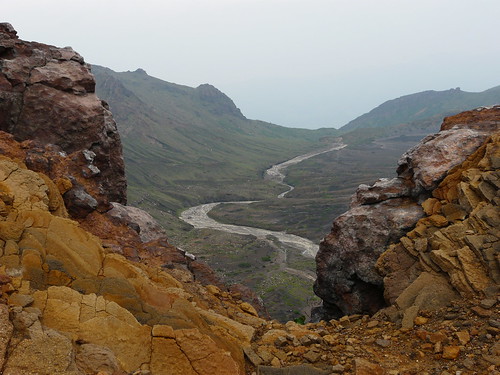
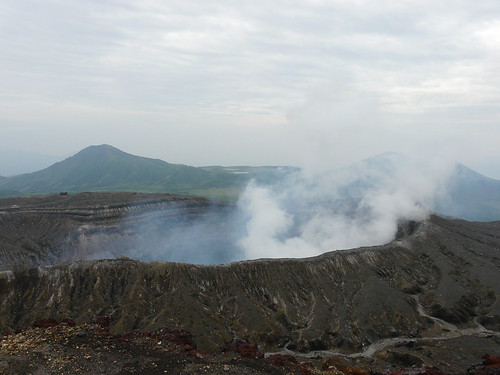
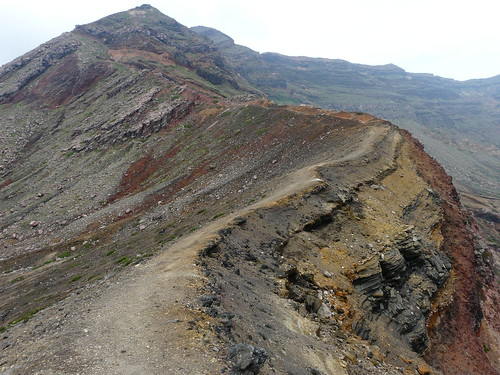
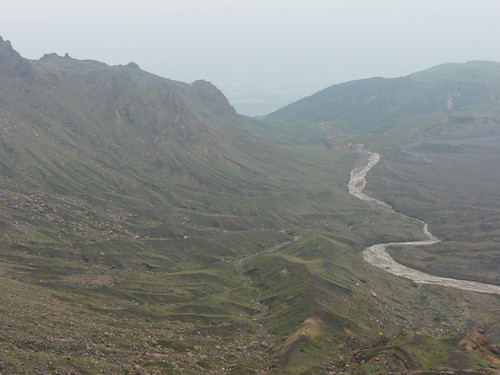
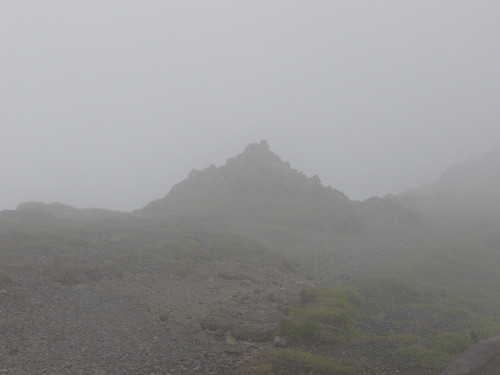

9 comments:
Great pics and narrative! Loved it, Bryan
Sounds like a nice hike! Thanks for posting. I was shocked by the unexpected appearance of the Richard Nixon rock formation in the first picture, tho, as I posted on your fLIckr.
Came across your post while looking through JapanSoc. A friend and I have been been putting together a collaborative blog for hiking and camping in Kyushu and Shikoku. Do you think you'd be interested contributing to it?
http://demo.inktails.com
@Blues Tea-Cha
Thanks for pointing that out. It does truly resemble a profile of Nixon's face, eerie.
@ Ben that sounds like fun. I have another camping trip lined up next month that heads to southern Miyazaki so that should make a good post. We should talk over details and maybe I could get some guidelines for the format I should write in (ie what info to include etc.). Let me know
Hi, a nice entry and always good to see people getting out and enjoying the Japanese mountains! Keep going back to Aso - it's incredible and has a very different character during the different seasons. I was lucky enough to head into Naka-dake crater once, for gas sampling, but it's pretty hairy to say the least!
With regards to the "formation of Kyushu" it's very difficult to categorise one reason, but certainly the volcanic geology is the result of subduction, as CJW said. Take a look at a satellite image of Aso one day. Its deposits basically cover the whole of central Kyushu. An awesome volcano...
Sorry this is my blog if you're interested: http://tombouquet.wordpress.com/. I also intend to write about Aso one day!
TPB
@TPD
Going into the crater!? Exciting stuff. Thanks for the info. I'll check it out.
can you please send me a link or screen shot of the route you took to my email.
yuhki333@gmail.com
thanks
Post a Comment